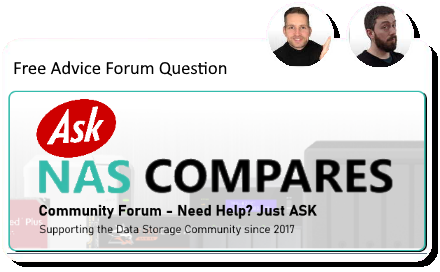09-08-2025, 09:38 AM
Thanks for the detailed message. Based on what you’ve done, the QNAP no longer recognizes the 10TB drive because its system references were wiped when you deleted the original storage pool and created a new one. Since it wasn’t part of a RAID, the data should still be intact — it’s just not being auto-mounted anymore.
Here are a few ways to recover your files:
1. Connect the 10TB drive to the NAS via a USB docking station
• Power on the NAS and plug the 10TB into a USB dock.
• QNAP should recognize it as an external drive, and if the file system is intact, you’ll be able to browse and copy your data across to the new volume.
2. Insert the 10TB into a spare bay on the NAS
• This is less likely to work since QNAP may still not auto-mount it or might flag it as foreign.
• But if you’re short on options and have a free bay, it’s worth a shot — just make sure you don’t initialize or format the drive.
3. Connect the 10TB to a Linux machine
• The file system is likely EXT4, so most Linux systems should be able to mount and browse it.
• From there, you can manually copy the data to another drive or back to the NAS over the network.
Here are a few ways to recover your files:
1. Connect the 10TB drive to the NAS via a USB docking station
• Power on the NAS and plug the 10TB into a USB dock.
• QNAP should recognize it as an external drive, and if the file system is intact, you’ll be able to browse and copy your data across to the new volume.
2. Insert the 10TB into a spare bay on the NAS
• This is less likely to work since QNAP may still not auto-mount it or might flag it as foreign.
• But if you’re short on options and have a free bay, it’s worth a shot — just make sure you don’t initialize or format the drive.
3. Connect the 10TB to a Linux machine
• The file system is likely EXT4, so most Linux systems should be able to mount and browse it.
• From there, you can manually copy the data to another drive or back to the NAS over the network.





